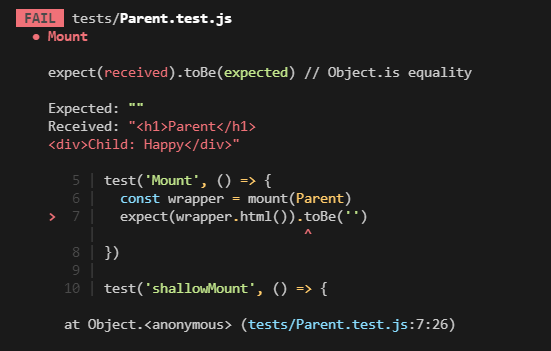반응형
단위 테스트는 최대한 가볍게 진행해야 하므로 얕은 마운트를 의미하는 shallowmount를 사용하기를 권장한다.
Parent.vue
<template>
<h1>Parent</h1>
<Child msg="Happy" />
</template>
<script>
import Child from './Child'
export default {
components: {
Child
}
}
</script>Child.vue
<template>
<div>Child: {{ msg }}</div>
</template>
<script>
export default {
props: {
msg: {
type: String,
default: ''
}
}
}
</script>Parent.test.js
import {mount} from '@vue/test-utils'
import {shallowMount} from '@vue/test-utils'
import Parent from './Parent'
test('Mount', () => {
const wrapper = mount(Parent)
expect(wrapper.html()).toBe('')
})
test('shallowMount', () => {
const wrapper = shallowMount(Parent)
expect(wrapper.html()).toBe('')
})


shallowMount를 사용한 결과는 child 태그 뒤에 stub가 붙어서 나온다.
mock, stub는 가짜, 모의를 의미한다.
mount
연결하는 특정 컴포넌트에 하위에 연결된 컴포넌트또한 랜더링 실행,
테스트가 무거워지는 문제점이 생긴다.
shallowmount
연결하는 특정 컴포넌트만 랜더링 실행,
하위에 컴포넌트는 stub를 붙여서 가짜로 연결이 된것처럼 보여준다.
반응형
'프론트엔드 > 단위 테스트' 카테고리의 다른 글
| Search 컴포넌트 테스트 (0) | 2022.01.31 |
|---|---|
| Header 컴포넌트 테스트, url 테스트 (0) | 2022.01.27 |
| VTU API 공식 문서 사이트 (0) | 2022.01.23 |
| VTU 첫 테스트 및 에러 해결(버전 문제) (0) | 2022.01.21 |
| 모의(Mock) 함수 (0) | 2022.01.20 |


